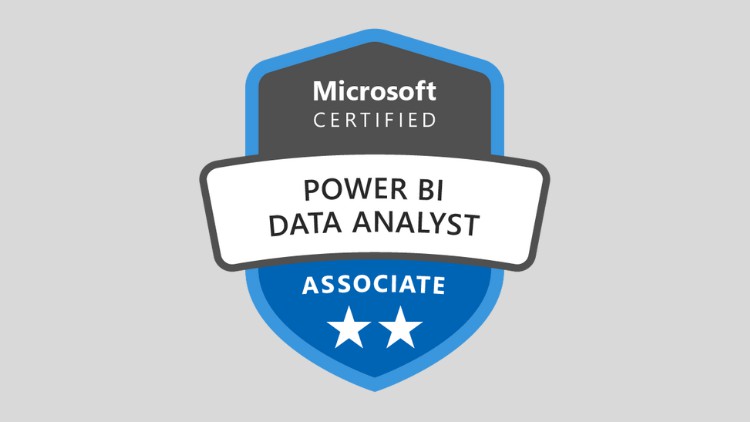Introduction to PL-300 Microsoft Power BI Data Analyst Certification
Data analysis skills are increasingly vital in today’s digital world, where businesses rely on data-driven decision-making. The PL-300 Microsoft Power BI Data Analyst certification is a valuable credential for professionals seeking to demonstrate their expertise in data analysis using Microsoft’s powerful business analytics tool. Obtaining this certification can open up new career opportunities and enhance your professional profile.
Microsoft Power BI is a comprehensive platform that enables users to analyze, visualize, and share data in a user-friendly and interactive manner. As a data analyst, mastering Power BI can significantly improve your ability to derive insights from complex data sets and communicate your findings effectively to stakeholders. The PL-300 certification is designed to test your proficiency in Power BI and validate your skills in data preparation, data modeling, data visualization, and data analysis.
Understanding the PL-300 Exam Structure and Content
The PL-300 Microsoft Power BI Data Analyst certification exam is designed to assess your skills and knowledge in data analysis using Microsoft Power BI. The exam consists of four domains, each with a specific weightage:
- Data Preparation (20-25%): This domain covers data cleaning, transformation, and loading using Power Query and other Power BI tools. You will be expected to demonstrate your ability to prepare data for analysis, ensuring data quality and consistency.
- Data Modeling (20-25%): This domain focuses on data modeling concepts and techniques in Power BI, including creating relationships, managing data categories, and optimizing performance. You will need to show your proficiency in creating efficient and effective data models for analysis.
- Data Visualization (25-30%): This domain evaluates your ability to create and customize compelling data visualizations using Power BI. You will be tested on your understanding of best practices for selecting appropriate visualizations, formatting, and interactivity.
- Data Analysis (25-30%): This domain measures your skills in applying data analysis techniques in Power BI, such as using DAX formulas, creating measures, and using advanced analytics features. You will need to demonstrate your ability to apply these techniques to real-world data analysis scenarios.
To succeed in the PL-300 exam, it is essential to have a solid understanding of these domains and their respective weightages. By focusing on these areas and practicing with real-world data analysis scenarios, you can increase your chances of passing the exam and becoming a certified PL-300 Microsoft Power BI Data Analyst.
Preparing for the PL-30
How to Excel in Data Preparation for PL-300
Data preparation is a crucial step in the data analysis process, and the PL-300 exam reflects its importance. To excel in data preparation, follow these best practices:
1. Data Cleaning
Data cleaning involves identifying and correcting or removing errors, inconsistencies, and inaccuracies in the data. This process ensures that your data is reliable and ready for analysis. In Power BI, you can use tools like the Data Quality feature in Power Query to help with data cleaning.
2. Data Transformation
Data transformation involves converting data from one format to another or changing the data’s structure to make it suitable for analysis. Power Query offers a wide range of transformation functions, such as splitting columns, merging queries, and pivoting data. Utilize these features to optimize your data for analysis.
3. Data Loading
Data loading refers to importing data into Power BI for analysis. To excel in data loading, ensure that you are using an appropriate data source and that your data is efficiently loaded into Power BI. Use features like data compression and incremental data loading to optimize the data loading process.
4. Power Query Best Practices
Power Query is a powerful data preparation tool in Power BI. To make the most of Power Query, follow these best practices:
- Use the M formula language to create custom data transformations.
- Create reusable queries and apply them to multiple data sources.
- Manage data privacy and security settings in Power Query.
- Leverage the Power Query Editor’s user-friendly interface to create and edit queries.
By mastering data preparation best practices and utilizing Power BI’s data preparation tools, you can improve your PL-300 exam performance and enhance your skills as a data analyst.
Data Modeling Techniques for PL-300 Success
Data modeling is a critical aspect of the PL-300 Microsoft Power BI Data Analyst certification exam. It involves creating and managing relationships between tables, optimizing performance, and managing data categories. Here are some best practices and techniques to help you excel in data modeling for PL-300:
1. Creating Relationships
In Power BI, you can create relationships between tables based on common columns or keys. To create efficient relationships, follow these tips:
- Use the Diagram view to visualize and manage relationships between tables.
- Create active relationships for query performance and passive relationships for data modeling.
- Understand and use various relationship types, such as many-to-many, one-to-many, and one-to-one relationships.
2. Managing Data Categories
Data categories help you organize and classify your data, making it easier to analyze and report on. In Power BI, you can use data categories like Date, Geography, and Hierarchy. To effectively manage data categories, follow these tips:
- Understand the different data categories and their uses.
- Assign appropriate data categories to your columns for better data organization.
- Use the Drill Down, Drill Up, and Drill Through features to navigate through your data categories.
3. Optimizing Performance
Optimizing performance is crucial for efficient data modeling. To optimize performance in Power BI, follow these tips:
- Use the Import and DirectQuery modes wisely to balance performance and data freshness.
- Create calculated tables and measures to pre-aggregate data and improve query performance.
- Use the Storage Mode and Data Size properties to optimize data storage and retrieval.
By mastering data modeling concepts and techniques in Power BI, you can create efficient and effective data models for analysis, enhancing your skills as a data analyst and increasing your chances of success in the PL-300 exam.
Designing Compelling Data Visualizations for PL-300
Data visualization is a critical skill for PL-300 Microsoft Power BI Data Analyst certification and for data analysts in general. Power BI offers a wide range of visualization options, and selecting the right one for your data and analysis scenario is essential. Here are some best practices and tips for designing compelling data visualizations in Power BI for PL-300 success:
1. Selecting Appropriate Visualizations
Power BI offers various visualizations, such as bar charts, line charts, scatter plots, and more. To select the most appropriate visualization, consider the following:
- The type of data you are working with (categorical, numerical, time-series, etc.)
- The analysis scenario (comparison, distribution, correlation, etc.)
- The story you want to tell with your data
2. Formatting Best Practices
Formatting is crucial for making your data visualizations clear and easy to understand. Here are some formatting best practices:
- Use consistent colors and fonts throughout your report.
- Label axes and provide clear titles for your visualizations.
- Use data labels and tooltips to provide additional context.
- Avoid cluttering your visualizations with unnecessary details.
3. Interactivity
Interactivity is a powerful feature in Power BI that allows users to explore data in more depth. Here are some ways to use interactivity in your data visualizations:
- Use filters and slicers to allow users to focus on specific data subsets.
- Add drill-down functionality to enable users to explore data at different levels of detail.
- Use bookmarks to create custom views and stories within your data.
By mastering data visualization best practices in Power BI, you can create clear, compelling, and informative data visualizations that help you excel in the PL-300 exam and in your career as a data analyst.
Applying Data Analysis Techniques in Power BI for PL-300
Data analysis is a core aspect of the PL-300 Microsoft Power BI Data Analyst certification exam. Power BI offers various data analysis techniques, such as using DAX formulas, creating measures, and using advanced analytics features. Here are some best practices and tips for applying data analysis techniques in Power BI for PL-300 success:
1. Using DAX Formulas
DAX (Data Analysis Expressions) is a formula language used in Power BI for data manipulation and calculation. To excel in using DAX formulas for PL-300, follow these tips:
- Understand the different DAX functions and their uses.
- Use calculated columns and measures to perform calculations on your data.
- Use context transitions and relationships to create more complex calculations.
2. Creating Measures
Measures are dynamic calculations that automatically update based on the data in your model. Here are some tips for creating measures in Power BI:
- Understand the different measure types, such as sum, average, and distinct count.
- Use the CALCULATE function to modify the filter context of your measures.
- Use the IF and SWITCH functions to create conditional calculations.
3. Using Advanced Analytics Features
Power BI offers advanced analytics features, such as time intelligence, forecasting, and clustering. Here are some tips for using these features:
- Understand the different time intelligence functions and how to use them for date and time calculations.
- Use the Q&A feature to ask natural language questions about your data.
- Use the Key Influencers visual to identify the factors that have the most significant impact on a metric.
By mastering data analysis techniques in Power BI, you can perform complex calculations, create dynamic measures, and use advanced analytics features to gain insights from your data. These skills will help you excel in the PL-300 exam and in your career as a data analyst.
Strategies for PL-300 Exam Success
The PL-300 Microsoft Power BI Data Analyst certification exam is a comprehensive assessment of your skills and knowledge in data analysis using Power BI. To succeed in the exam, it’s essential to have a solid strategy in place. Here are some tips and strategies for PL-300 exam success:
1. Time Management
The PL-300 exam is timed, so it’s crucial to manage your time effectively. Here are some tips for time management:
- Read the questions carefully and thoroughly before answering.
- Use the mark for review feature to flag questions that you want to come back to later.
- Answer the easier questions first to build confidence and save time for the more challenging questions.
2. Practice Tests
Practice tests are an excellent way to prepare for the PL-300 exam. Here are some benefits of using practice tests:
- They help you become familiar with the exam format and question types.
- They provide feedback on your strengths and weaknesses, allowing you to focus your study efforts.
- They help you build confidence and improve your time management skills.
3. Review Key Concepts
Reviewing key concepts is essential for PL-300 exam success. Here are some tips for reviewing key concepts:
- Create flashcards to help you remember key terms and definitions.
- Review the PL-300 exam objectives and ensure you understand each skill and knowledge area.
- Practice using Power BI and real-world data analysis scenarios to reinforce your learning.
4. Gain Hands-On Experience
Hands-on experience with Power BI is crucial for PL-300 exam success. Here are some ways to gain hands-on experience:
- Use Power BI in your current job or projects.
- Participate in online communities and forums to learn from other Power BI users.
- Complete online courses and tutorials to learn new skills and techniques.
By following these strategies and tips, you can increase your chances of success in the PL-300 Microsoft Power BI Data Analyst certification exam. Remember to stay up-to-date with the latest features and updates in Power BI, and good luck with your exam preparation!








